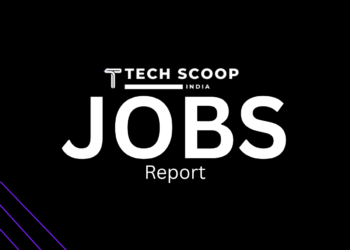India’s job market continues to show resilience and adaptability in July 2025, driven by robust growth in technology, retail, telecommunications, and banking sectors, according to the latest data from the National Statistical Office (NSO) and industry insights. With the unemployment rate holding steady at 5.6% in June 2025, the employment landscape reflects both opportunities and challenges as the nation navigates technological advancements and global economic shifts. Here’s a deep dive into the key trends shaping India’s job market this week.
Unemployment Rate Steady, Regional Variations Persist
The NSO reported that India’s unemployment rate remained stable at 5.6% in June 2025, unchanged from May. However, regional disparities are evident, with rural areas recording a lower unemployment rate of 4.9%, while urban centers saw a slight uptick to 7.1%, influenced by seasonal factors. This stability comes amidst a slight decline in the Labour Force Participation Rate (LFPR) to 54.2%, signaling that fewer individuals are actively seeking work, possibly due to seasonal or structural factors.
Tech Sector Leads the Charge
The IT and software services sector remains a cornerstone of India’s job market, with projections indicating a 15-20% growth in job opportunities in 2025. Emerging technologies such as artificial intelligence (AI), machine learning (ML), cloud computing, and cybersecurity are fueling demand for skilled professionals. Roles like AI/ML specialists, full-stack developers, and cloud engineers are among the most sought-after, with companies like Tata Consultancy Services, Infosys, and HCLTech planning to hire over 126,000 new employees in FY 2025.
Fresher hiring is also on the rise, with top IT firms committing to onboard approximately 82,000 graduates in FY25, a significant increase from previous years. The focus on AI and generative AI is expected to create one million new jobs by 2028, with salaries for mid-level positions in these domains projected to rise by 25-30%. Additionally, Global Capability Centers (GCCs) continue to be a major driver, employing over 600,000 professionals since 2018 and expected to reach 2.8 million by 2030.
Gig Economy and Tier-2 Cities Gain Momentum
The gig economy is witnessing explosive growth, with the IT-related gig workforce projected to reach 23.5 million by 2030, up from 7 million in 2021. Freelancers leveraging AI tools report 40% higher productivity, making gig work increasingly attractive. Platforms like Upwork and Freelancer are seeing a surge in demand for tech-related freelance roles, with hourly rates ranging from $5 to $400 depending on expertise.
Hiring is no longer confined to metro hubs like Bengaluru and Hyderabad. Tier-2 cities such as Coimbatore (27% hiring growth) and Jaipur (22%) are emerging as employment hotspots, driven by digital transformation and infrastructure development. This decentralization is creating opportunities for professionals seeking to work closer to home while contributing to India’s tech ecosystem.
Challenges: Skill Gaps and Global Uncertainties
Despite the positive outlook, challenges persist. The Mercer-Mettl India Graduate Skill Index 2025 reveals that only 42.6% of graduates are employable, a decline from 44.3% in 2023. The gap between industry needs and graduate skills is particularly stark in non-technical areas like communication, problem-solving, and adaptability, which are critical in an AI-driven workforce. Technical skills in AI, data analytics, and cybersecurity remain in high demand, but the education system’s focus on theoretical learning leaves many graduates unprepared.
Global economic uncertainties, particularly in the U.S., which accounts for a significant portion of India’s IT exports, pose risks. Potential changes to H-1B visa policies under the new U.S. administration could impact the mobility of Indian IT professionals, affecting the sector’s growth. However, optimism prevails, with the banking and financial services sector expected to see a revival, driving demand for tech-enabled roles.
Festive Season Boost and Sectoral Growth
As India gears up for the festive season, hiring is expected to surge, with over 216,000 jobs projected to be created, reflecting a 15-20% increase in demand compared to last year. Retail, e-commerce, and logistics are leading this seasonal boom, with roles in tech-enabled logistics and digital marketing seeing significant growth. The retail sector alone is forecasted to expand by 12% in 2025, driven by e-commerce and tech-enabled functions.
Other sectors like telecommunications (11% hiring growth) and BFSI (10%) are also set to thrive, with a focus on digital tools, compliance expertise, and sustainability metrics. The hospitality sector is projected to grow by 5%, driven by demand for tech-enhanced guest experiences.
Upskilling: The Key to Staying Competitive
To address the employability gap, companies are increasing upskilling budgets by 15-20% in 2025. Initiatives like Skill India and the IndiaAI Mission are promoting continuous learning in AI, cybersecurity, and data management. The World Economic Forum’s Future of Jobs Report 2025 notes that 63% of Indian workers will require training by 2030, with 12% unlikely to receive it, highlighting the urgency of these efforts.
Professionals are also taking initiative, with many enrolling in LinkedIn Learning courses to build skills in AI, cloud computing, and soft skills like adaptability. LinkedIn reports that 82% of Indian professionals are seeking new job opportunities in 2025, but 55% find the job search more challenging due to specific skill requirements and talent shortages.
Looking Ahead
India’s job market in July 2025 paints a picture of cautious optimism. The IT sector’s robust growth, coupled with the rise of the gig economy and hiring in Tier-2 cities, signals a dynamic employment landscape. However, addressing the employability crisis and navigating global uncertainties will be critical to sustaining this momentum. For job seekers, the message is clear: upskill, adapt, and seize the opportunities in this fast-evolving market.
Stay tuned to TechScoopIndia for more updates on India’s tech and employment trends.


![[Week 2] Indian Jobs Report: A Snapshot of Employment Trends for July 2025 [Week 2] Indian Jobs Report: A Snapshot of Employment Trends for July 2025](https://techscoopindia.com/wp-content/uploads/2025/07/JOBS-750x375.png)














